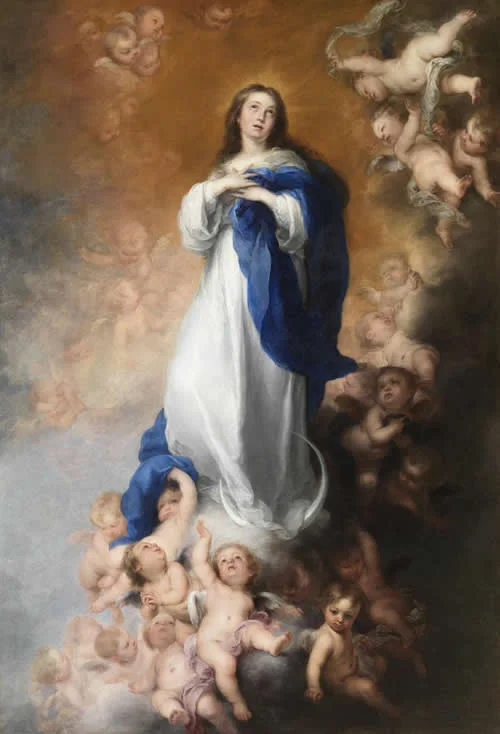The Looting of Murillo's Works

The Immaculate Conception of the Venerable Ones, 1678
In 1810, during the French invasion, Seville suffered the plunder of works of art. It is one of the most deplorable examples of artistic looting that has occurred, and it deprived the city of the artistic collections in its churches and convents. The troops that entered Seville, led by Marshal Soult, came prepared to execute the plunder. Joseph Bonaparte had been convinced to form a Royal Museum dedicated to the great Napoleon that would house the best paintings of Spain. Therefore, Soult carried out an intolerable artistic plunder in convents, parishes, monasteries, and brotherhoods. Although they had a special preference for works by Murillo, they also robbed paintings by Zurbarán, Herrera the Elder, Roela, and Pacheco.
As a result, the buildings of Santa María la Blanca, the Holy Charity, San Francisco, San Buenaventura, Santa Isabel, Santa María de Gracia, and the Cathedral were obligated to turn over their best paintings to the French. Only the Capuchins, who knew the intentions of the French beforehand, could take down works by Murillo, moving them to Cadiz, where they hid them in private homes. They returned the artwork to Seville at the end of the war. For this reason, the Sevillian Museum of Fine Arts now has an important collection of Murillo artwork that would otherwise be hung in the Louvre Museum in Paris or distributed in various private collections.
Soult and other generals and officials were rewarded with several paintings that they themselves took. Soult's inheritance was sold in part, while other works were passed to the Louvre Museum.
Murillo was the main objective of Soult's looting. He removed the first works Murillo produced, consisting of ten paintings that decorated the Small Cloisters of the San Francisco Convent. Today they are dispersed in different art galleries.
Soult also removed The Birth of the Virgin from the Cathedral of Seville. It is now located in the Louvre Museum.
Additionally, he looted four paintings from the church of Santa María la Blanca and one Immaculate Conception painting from the Hospital de los Venerables.
From the church of the Hospital de la Santa Caridad, Soult removed four paintings that would decorate his luxurious mansion.
Once the War of Independence ended, the Spanish government protested the plunder, demanding the return of the artwork, especially Murillo's paintings. A portion of the paintings from Santa María la Blanca were returned to Spain, although not to Seville, as they stayed in the Prado Museum along with an Immaculate Conception painting that was returned in 1941. This return was not free; Spain had to give France the Portrait of a Child by Velázquez, which left the Prado for the Louvre.
If you have a work that has a high probability of being a Murillo, we would like to hear from you. Please use our contact form or send a message to info@murilloexperts.com attaching photos (front and back) of the work.